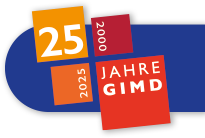Our client, a music library in South Germany, maintains a vast collection of vinyl records. It is of high interest especially for experts, since it comprises a considerable number of musical works by musicians from the region, in a range and variety probably not to be found anywhere else.
Project duration: 18 months
Retroconversion – in documentation, the term refers to the electronic processing of catalog cards or other finding aids. The music library kept comprehensive documentation of its records in two card catalogs: one was sorted alphabetically according to composers; the second catalog listed song titles and first lines. Information on a specific record was divided across several catalog cards, for instance, if the record featured a comprehensive collection of songs by different authors, composers, and performers. A number that the library allocated to every record helped to match the scattered information to the record unambiguously.
Our responsibility was to collate all available information for every record in one data record, and to register it in pre-defined fields which will completely and unambiguously allow for future research. Is the medieval song Der Baur will tanzen part of a song cycle? How many songs by the Russian composer Khachaturian (or Chatschaturjan?) does the collection hold? It is easily imaginable that not only the number of designations for musical pieces or the spelling of proper names may vary widely. When our musicologists allocated uniform titles according to the relevant regulations and norms, they had to observe the standardized spellings of the names of orchestras, choirs, or composers, as they are stored in the databases of the German National Library and the German Music Archive.
After the electronic processing of the catalog, all important information pertaining to the record stocks of the library – e.g. song title, first line, performer, or lyricist – is now unified in one data record for each vinyl item for the first time, ready to be researched comfortably and unambiguously – in a quality that will satisfy the demands of even the meticulous expert. So, the benefit of the information compiled by the library with great care and diligence really comes into effect only now, in electronic form.
 Skip to content
Skip to content
